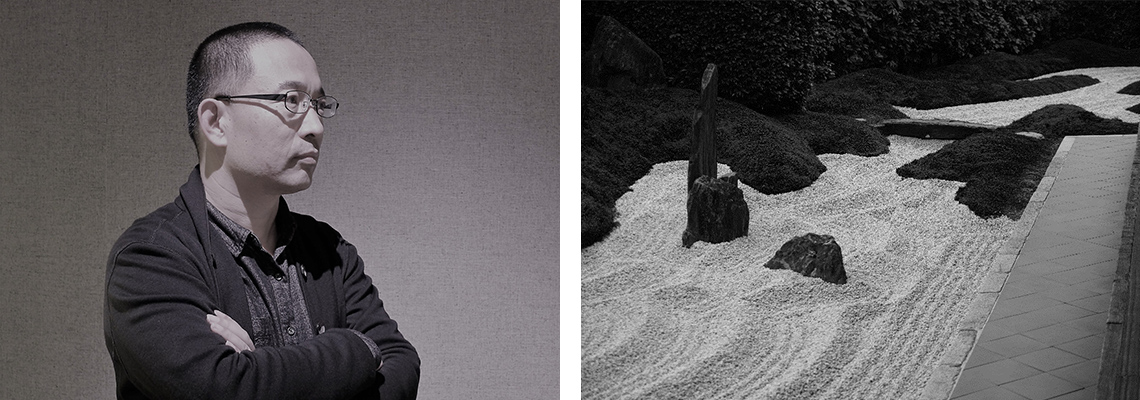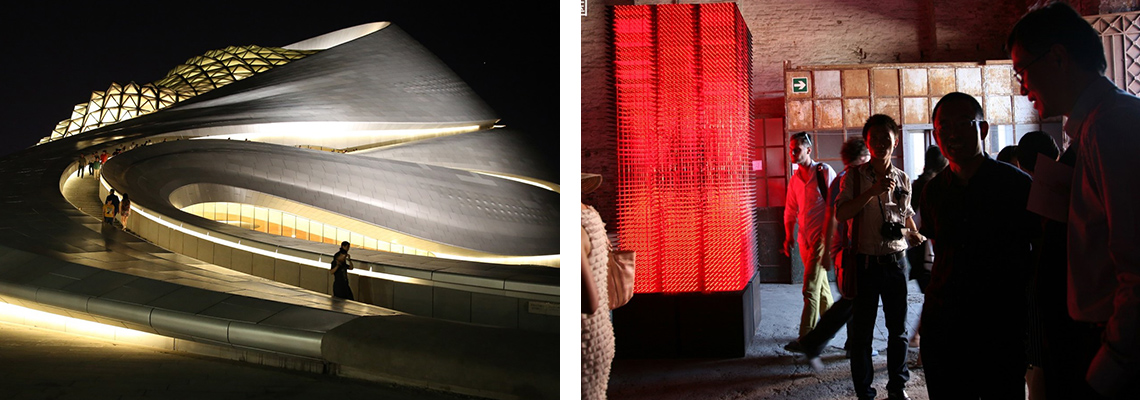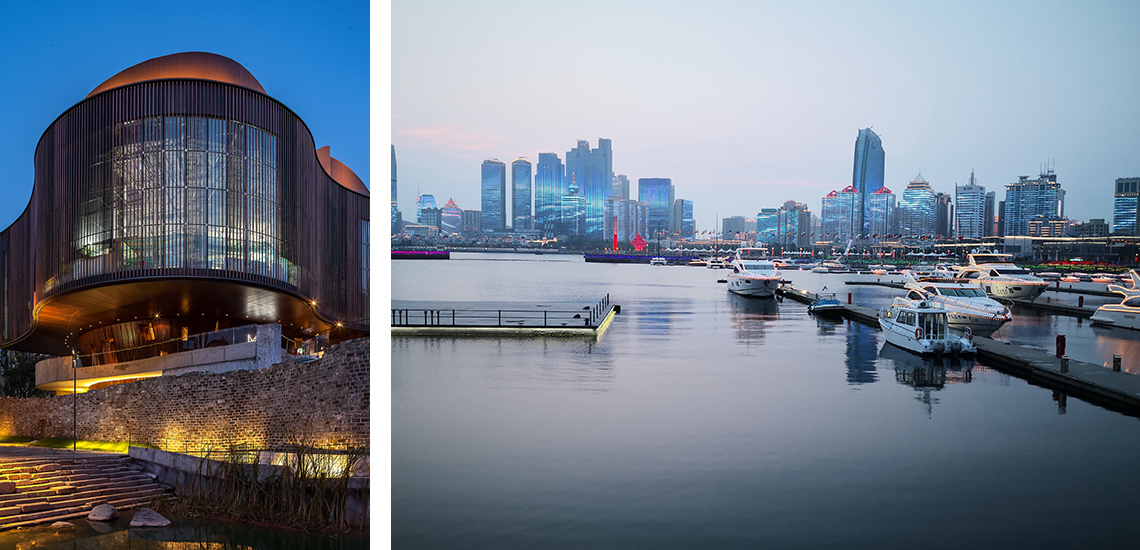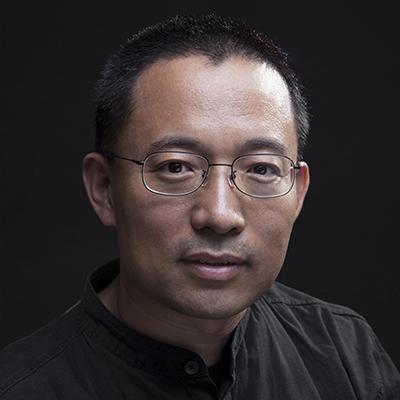Xu Dongliang, General Manager at Toryo International Lighting Design Center, talked about the circumstances of lighting designs in a rapidly developing China that can be seen through the architecture, city development, and overall cities while introducing recent examples.
Xu used to be an architect and was interested in Japanese historical architecture. He stayed in Japan, mainly around Nara, for seven years and was certified as a first-class architect. During his stay in Nara, he had a friendship with a legendary temple and shrine carpenter, Tsunekazu Nishioka. In contrast to his career, his lighting designs in China have strong messages, arising from his unique world view.
Showing a slide of the dry landscape of a temple in Kyoto, Xu called this dry landscape garden a “message.” The pattern in the gravel is made when a monk tidies up the garden gravel and is different every day. Therefore, it is a “message” representing how a monk feels on that day. Likewise, Xu thinks lighting design projects in China are also “messages” for people and towns.

©toryo international lighting design
His lighting designs can be categorized into three areas: lighting design, light artwork creation, and digital lighting design. While seriously undertaking lighting designs, he also works on large-scale designs, called media façades in cities. Xu considers such massive scale lighting designs as huge TV screens, and the buildings are used as their foundations.



©toryo international lighting design
Renowned German lighting designer, Andreas Schulz, responded at the venue to this and expressed his concern about large-scale nighttime lighting designs in cities, saying, “Lighting designs should coexist with buildings and bring out the virtues of the buildings.” Xu replied, “In most cases, I respect the buildings. However, I think going beyond lighting design to accommodate each purpose may be one possibility and what is demanded of this age. I hope you’ll understand this is a new challenge for lighting designers and is still developing.”

©toryo international lighting design
Finally, moderator Mende concluded that media façade designs are much more powerful than the interests of Xu as an individual or the owners of buildings, and they are more like “urban scenery created by the Chinese society and economic system” rather than the work of Xu.
【Date & Time】11:15‒12:15, March 6, 2019
【Venue】Room 101, 1F, Conference Tower, Tokyo Big Sight
【Speaker】Xu Dongliang, General Manager, TORYO INTERNATIONAL LIGHTING DESIGN CENTER
【Moderator】Kaoru Mende, Principal, Lighting Planners Associates
【Organizers】IALD Japan, JLMA, Nikkei Inc.
Profile
Xu Dongliang
In this lecture, I will present on lighting design in the digital age, using case studies of lighting design in China in all areas from architecture to town planning and cities overall. Introducing the circumstances in the rapidly-developing China, I would like my presentation to be a discussion of the various types of responses and the future of lighting design in China.







